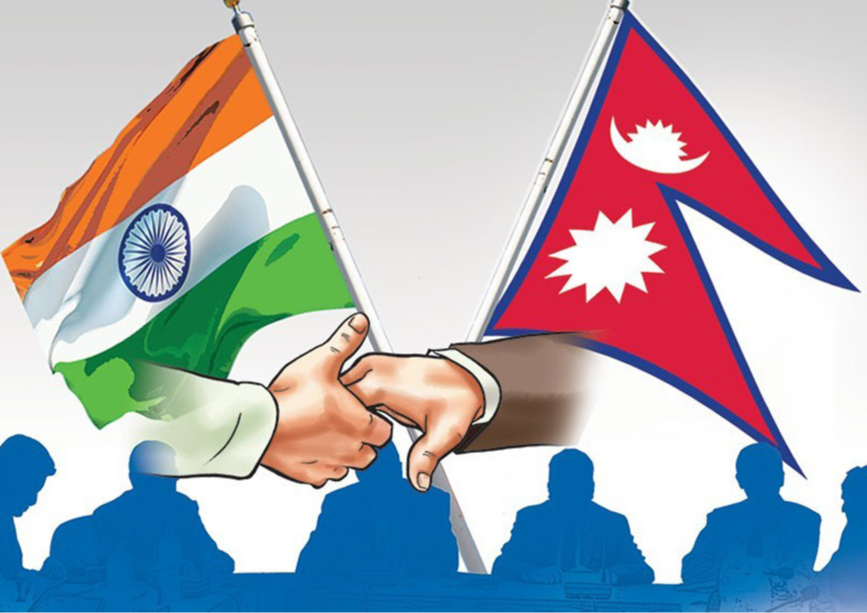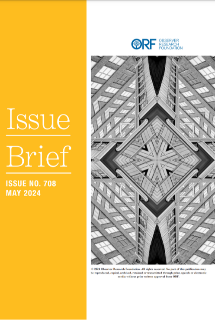
After several years of contention in the political relationship, Nepal and India are now focusing on building connectivity between the two nations to renew bilateral ties. Recently, both countries have strengthened digital financial connectivity by introducing a cross-border e-payment mechanism to ease cross-border trade, tourism, and remittance flow. This development is in addition to other connectivity partnerships including Integrated Check Posts (ICPs), cross-border railways, and power transmission lines in the last few years. Furthermore, India’s success with its Digital Public Infrastructure (DPI) and the prospect of further bilateral cooperation on digital infrastructure enhances the possibility of wider economic integration and strengthens people-to-people ties with Nepal. Cross-border digital infrastructures can promote trans-border trade through digitised custom procedures, facilitate wider customer bases for businesses and startups through e-commerce, and enhance cultural exchange and tourism through digital platforms.
The row of political contentions
During his first state visit to Nepal in 2014, Prime Minister Modi suggested a ‘HIT’ vision for Nepal, with a focus on cooperation on highways, information ways, and transways-transmission lines. However, with the downturn in the political relationship following 2015, Nepal-India ties dipped to a historic low. The relationship worsened when Delhi issued a new political map including the disputed land area of Kalapani and Lipulekh within Indian territory, and opened a road link via Lipulekh to Kailash Mansarovar. In response, Nepal also unveiled a new political map incorporating the disputed territories of Kalapani, Lipulekh, and Limpiyadhura. The Nepalis became even more disgruntled when India halted the supply of 1 million COVID-19 vaccines, quoting the surge in domestic demand in the middle of the COVID-19 wave in April 2021, despite Nepal having already paid for it.
Nepal even requested India not to recruit Nepali youth under the Agnipath Scheme, as it deprives Nepalis of a full career growth in the Indian Army, and could potentially have social impacts on the returnees after four years of service.
Further, in 2022, the introduction of the Agnipath Scheme for military recruitment in India raised concerns about the fate of the long-standing Gorkha regiment. Nepal even requested India not to recruit Nepali youth under the Agnipath Scheme, as it deprives Nepalis of a full career growth in the Indian Army, and could potentially have social impacts on the returnees after four years of service. These episodes of contention between Nepal and India not only induced mistrust and suspicion at the political level resulting in a gridlock in the bilateral relationship, but also diluted the public perception of India among Nepalis.
Broadening cross-border connectivity links
Amidst the deadlock in the relationship, both countries have amplified pragmatic efforts to revive ties through cooperation on connectivity infrastructure and economic integration. The two countries signed an agreement in January 2024 to import up to 10,000 megawatts of electricity from Nepal in the upcoming 10 years. India has agreed to facilitate the export of electricity from Nepal to Bangladesh via Indian transmission infrastructure. Further, to intensify energy and investment cooperation, a project development agreement has been signed for the development of the 669 MW Lower Arun Hydroelectric project by NHPC Ltd in Nepal. In June 2023, the prime ministers of both countries jointly inaugurated the ICP at the Nepalganj-Rupaidiha border, laid the foundation stone of an ICP at the Bhairahawa-Sunauli border, and signed a Memorandum of Understanding (MoU) for the construction of an ICP and dry port at Dodhara-Chadani to be built with Indian assistance. India is also supporting the second phase of construction of the cross-border Motihari-Amlekhgunj Petroleum Pipeline Project, and an agreement has been reached for the construction of a new pipeline project from Siliguri to Jhapa in eastern Nepal. Indian assistance for the extension of the Jaynagar-Kurtha passenger rail service to Bijalpura in central Nepal is expected to further intensify trade and people-to-people ties.
Easing tension in ties: Towards cooperation on financial and digital connectivity
In addition to physical infrastructure, financial and digital connectivity are becoming increasingly important. Nepal and India have launched a cross-border digital payment mechanism to facilitate seamless inter-country financial transactions. An MoU was signed between the National Payments Corporation of India (NPCI) and Nepal Clearing House Limited (NCHL) to facilitate cross-border digital transactions in June 2023. Following the development, from 28 February 2024, Indian nationals can make payments via mobile fund transfer and QR code scans through United Payment Interface (UPI) apps in Nepal. Although Nepal has yet to launch its digital payment system in India due to delayed preparations on Nepal’s part, the introduction of a cross-border e-payment mechanism is expected to ease and secure cross-border payments and facilitate cross-border remittance, commerce, and tourism.
Nepal and India have launched a cross-border digital payment mechanism to facilitate seamless inter-country financial transactions.
The free movement of people between Nepal and India has facilitated a large number of migrant populations across both countries. India is the preferred destination for a large chunk of Nepali temporary migrants for both seasonal and prolonged stays for jobs, business, pilgrimage, education, and other purposes. While there is no official record-keeping mechanism to track the number of migrants from one country to another, it is estimated that 600,000 Indians are living in Nepal, and around 3-4 million Nepalis are estimated to be living and working in India. Despite being close neighbours, the lack of a cross-border digital fund transfer mechanism has hindered the easy and instant remittance flow and higher costs has been incurred in remittance transactions.
The launch of a cross-border digital payment facility is expected to boost tourism in Nepal and help Nepal’s tourism bounce back after the COVID-19 pandemic. Nepal hosted more than 315,000 Indian tourists in 2023, making India the largest source of foreign tourists. This figure only includes Indian tourists travelling by air, and there is no official record of tourists entering Nepal via land routes. According to an official study by the Tourism Ministry in 2017, at least 1.2 million Indian tourists entered Nepal through land entry points for recreation and pilgrimage purposes. Similarly, Nepal remained the seventh largest source of inbound tourists to India in 2022. For the tourism sector, cross-border payment has remained a big hassle as tourists and business people travelling across the countries have a hard time with digital financial transactions. Nepal has banned Indian bank notes of denominations of more than INR 100 following the demonetisation phenomenon in India, back in 2016. This forced Indian tourists to carry bundles of INR 100 notes while visiting Nepal. Further, the availability of debit card transactions only in the urban areas added to the constraints in conducting financial transactions. The introduction of digital financial transactions with hassle-free, low-cost, real-time payments through mobile wallets is expected to ease the financial transactions for tourists, and pilgrims across the countries by eliminating the hassles of visiting banks for currency exchange and carrying physical cash.
Deepening cross-border digital connectivity
In February 2024, the Indian Ministry of Communications amended its provisions to allow Nepali citizens to obtain mobile SIM cards during their travel to India. With the digitisation of SIM card distribution in 2021, Indian authorities stopped issuing SIM cards to foreign citizens without a valid visa based on the provisions introduced by the Ministry in 2012. As Nepali nationals do not require a visa to travel to India, they cannot get SIM cards thus hindering communications for those travelling for business, pilgrimage, study, medical treatment, and other purposes. The new provision allows Nepalis to obtain SIM cards based on valid ID proof including citizenship, passport, voter ID, or any photo ID issued by the Nepali Embassy. This will facilitate convenience in communication across borders and also ensure the provision of equal treatment and similar privileges to the nationals of one country in the territories of another, based on the Peace and Friendship Treaty of 1950.
As Nepali nationals do not require a visa to travel to India, they cannot get SIM cards thus hindering communications for those travelling for business, pilgrimage, study, medical treatment, and other purposes.
Further enhancement in Nepal-India digital connectivity would remain instrumental in deepening economic and people-to-people ties across the two countries. The integration of digital payment interfaces would open up the vast Indian market for trade and commerce through easily accessible, hassle-free, and low-cost instant payment transactions. This will particularly benefit small traders and start-ups across the countries. Nepal could also leverage India’s success in DPI to collaborate on its digitisation journey and jointly foster interoperable digital systems for cross-border economic integration to benefit from the long-standing economic and people-to-people linkages. However, an integrated, safer, and regulated approach is needed for the potential data protection and privacy risks concerning the cross-border data flow.
Conclusion
These recent developments to renew bilateral relationships through enhanced cooperation on digital and other fronts of cross-border connectivity signify the efforts of both countries to mend their ties which hit a low following the political crisis in 2015. However, rebuilding the atmosphere of political trust and improving the public perception of India among Nepalis requires the India’s readiness to openly discuss contentious issues in the bilateral relationship and demonstrate flexibility to accommodate Nepal’s interest. For now, attempts to revive the relationship through new avenues of cooperation with a focus on digital connectivity is a welcoming move.
Arpan Gelal is a Research and Programme Coordinator at the Centre for Social Innovation and Foreign Policy (CESIF), Nepal.
The views expressed above belong to the author(s). ORF research and analyses now available on Telegram! Click here to access our curated content — blogs, longforms and interviews.




 PREV
PREV


